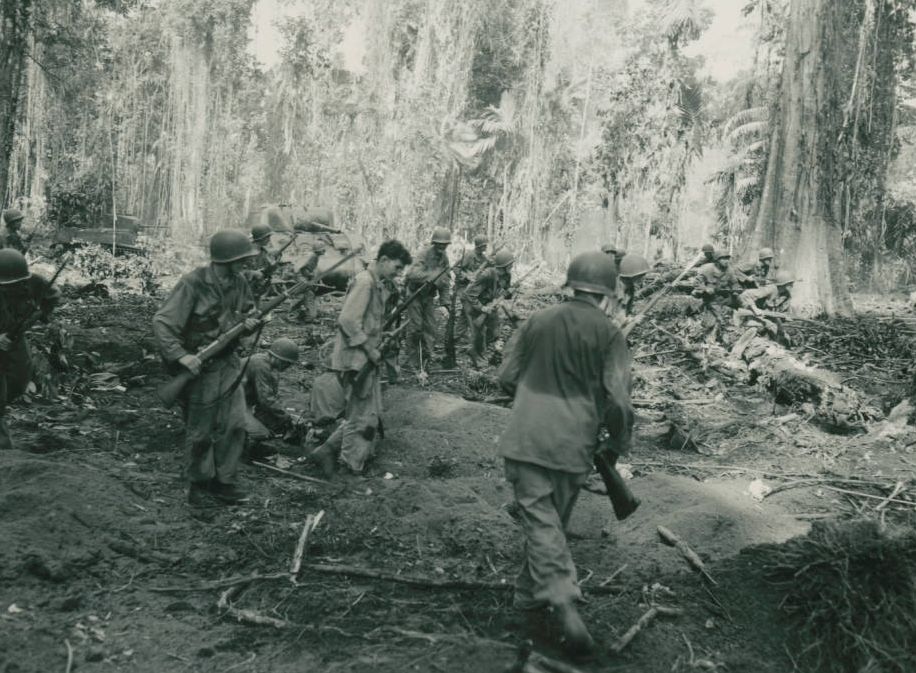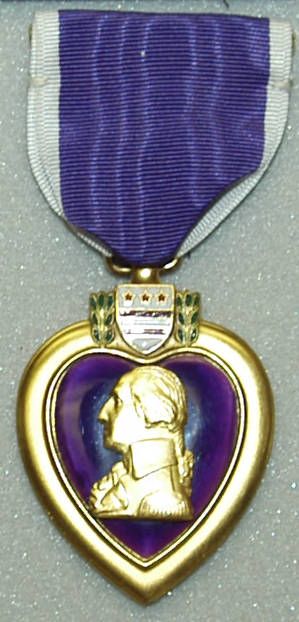Singularly Meritorious Actions: The Purple Heart

On August 7, 1782, George Washington established the Badge of Military Merit. It was the first award of its kind, as it was given in recognition of service to the nation, regardless of rank. The award was made of purple silk in the shape of a heart, and edged in lace binding and was received for “any singularly meritorious action.”
At the end of the Revolutionary War, the badge fell into disuse. 150 years later, however, on the heels of World War I, it was reinstated and renamed the Purple Heart. Designed by heraldic specialist Elizabeth Will, the medal features a profile of George Washington in gold mounted on a purple enamel heart and surrounded by a gold border. The reverse of the medal is inscribed with the words “for military merit.” The Purple Heart is unique in that, just as was the case when it was introduced, it is awarded for meritorious acts rather than being given by recommendation. Today, meritorious acts which are eligible for the Purple Heart are defined as any which result in injury or death while serving in the military and typically involve actions against opposing armed forces. It is awarded to any American service member who meets the given criteria after April 5, 1917.
Today, approximately 1.9 million Americans have been awarded the Purple Heart. It is difficult to determine how many of those nearly two million individuals are Ohioans, but through the generosity of two Ohio families, Ohio Memory holds images of memorabilia relating to the Purple Heart, including two medals.

Bill Pitsenbarger was a 21-year-old member of the U.S. Air Force. After nearly 300 rescue missions, he was shot and killed by a Viet Cong sniper on April 11, 1966, while giving aid to stranded military members on the ground in Vietnam. A true hero, he was awarded not only the Purple Heart but several other medals, including the Congressional Medal of Honor. A Piqua native, Pitsenbarger is buried at the Miami Memorial Park Cemetery in Covington, Ohio. Not only did his family donate several of his medals to the National Museum of the U.S. Air Force, but they also donated his parachute jump log, which you can view on Ohio Memory.
Addison Baker joined the Akron Army Air Corps in 1929 when he was 22 years old. On August 1, 1943, on a mission over Romania and despite significant damage to his plane by German anti-aircraft guns, he led his fellow pilots to successfully destroy several Romanian oil refineries. Unfortunately, the damage to his plane was such that he was unable to gain sufficient altitude to eject. His plane ultimately crashed, killing all ten service members on board. Baker’s body was never recovered, but a memorial stands for him in the Florence American Cemetery and Memorial in Florence, Italy. Like Pitsenbarger, Baker’s Purple Heart was awarded posthumously and is available for viewing in Ohio Memory, as are the five other military medals he was awarded as a result of his brave actions.
Incidentally, if you are available on the evening of August 7 and would like to recognize the brave men and women who have been awarded the Purple Heart by virtue of their sacrifices, Columbus is hosting its second annual Purple Heart 5K run. The event is not affiliated with Ohio Memory or any of its participants, but we join together in support of the event and those it honors. And, if you are unable to attend the event, we hope that you will take a moment to think of those who have sacrificed so much as they’ve served our nation.
Thank you to Shannon Kupfer, Digital/Tangible Media Cataloger at theState Library of Ohio, for this week’s post!



Leave a Reply
You must be logged in to post a comment.